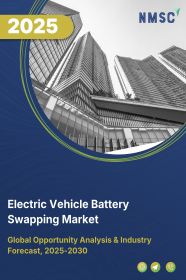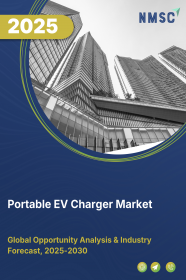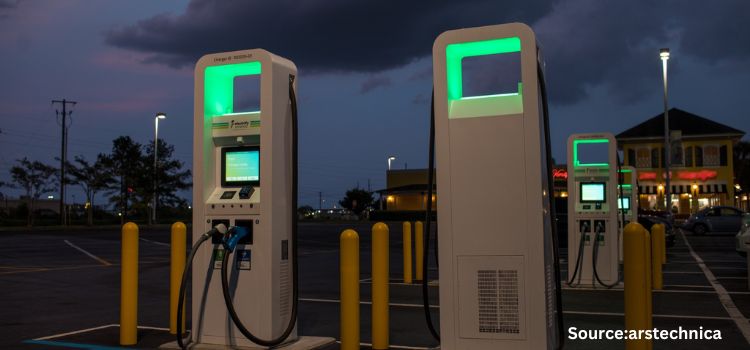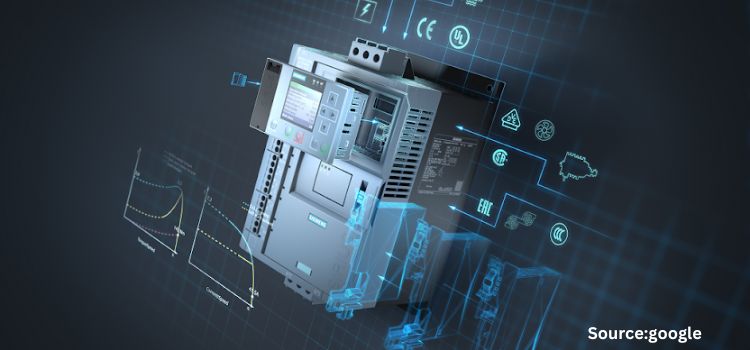
Electric Vehicle Battery Swapping Market by Vehicle Type (Two-Wheelers, Three-Wheelers, Passenger Cars, and Commercial Vehicles), by Battery Type (Lithium-ion Batteries, Lead-Acid Batteries, and Others), by Swap Station Type (Automated Swap Stations, and Manual Swap Stations), by Service Type (Subscription Model and Pay-Per Use Model), and by End User (Private Individuals, Fleet Operators, Public Transport Authorities, and Others)–Global Opportunity Analysis and Industry Forecast 2025-2030
US Tariff Impact on Electric Vehicle Battery Swapping Market
Trump Tariffs Are Reshaping Global Business
Electric Vehicle Battery Swapping Market Overview
The Global Electric Vehicle Battery Swapping Market size was valued at USD 3.45 billion in 2024, and is expected to be valued at USD 4.83 billion by the end of 2025. The industry is projected to grow further, hitting USD 26.03 billion by 2030, with a CAGR of 40.0% between 2025 and 2030.
The electric vehicle (EV) battery swapping market is witnessing significant market growth, propelled by surging EV sales, reduced charging times, and growing investments in sustainability from leading players such as NIO, Ample, and Gogoro. However, the high initial costs of establishing swapping infrastructure pose barriers to seamless expansion. Despite this challenge, the integration of smart technologies, particularly artificial intelligence (AI), presents substantial opportunities for innovative market trends, especially in urban and commercial sectors.
Surging EV Sales is Driving the Growth of the Market
The rapid increase in global EV sales is accelerating market demand for battery swapping solutions. As per the International Energy Agency, EV sales surged to 14 million units in 2023, with market share rising from 14% in 2022 to 18%. This growing adoption fuels market growth by increasing the need for rapid and accessible charging alternatives. Battery swapping meets this demand by enabling EV users to replace depleted batteries with fully charged ones in minutes, enhancing convenience and supporting market trends toward efficient electric mobility.
Reduction in EV Charging Time Fuels Market Demand
Battery swapping significantly reduces EV charging time, addressing a critical need in the evolving EV ecosystem. This considerably decreases the downtime in comparison to conventional charging processes and procedures. For instance, in December 2024, CATL introduced its Choco Swap batteries in collaboration with nearly 100 partners, promoting standardized systems that enhance efficiency. This innovation drives market demand by making electric mobility more practical and appealing globally.
Growing Investments in Sustainability Propel Market Expansion
Rising public and private investments in sustainable development are accelerating the market growth of EV battery swapping. According to the World Bank Group, green bonds raised USD 2.5 trillion in 2023 to support eco-friendly projects, including transportation infrastructure. Companies like NIO, with over 2,400 swapping stations worldwide, and Gogoro, operating 12,000 stations for two-wheelers, are leveraging these funds to expand networks. Strategic partnerships, such as Ample’s collaborations with fleet operators, further enhance accessibility, aligning with market trends toward greener mobility solutions.
High Initial Infrastructure Costs in Setting Up Battery Swapping Stations Hinder Market Growth
The high initial costs associated with setting up battery swapping stations remain a significant barrier to market growth. Expenses related to land acquisition, battery inventories, and sophisticated automation systems create financial challenges for operators. These costs, coupled with the need for compatibility across diverse EV models, make it difficult for new entrants to scale, particularly in regions with lower EV adoption, thus restraining the broader market demand for swapping infrastructure.
Smart Technology Integration Creates Significant Growth Opportunities
The integration of AI and smart technologies into battery swapping stations offers substantial opportunities for market growth. AI-driven systems monitor battery demand, automate maintenance, and ensure availability, reducing wait times and improving reliability. For example, in February 2025, NIO deployed AI-enhanced swapping stations in China, cutting swap times by 10%. As smart technologies advance, they are poised to streamline operations, attract investments, and drive sustainable expansion in the EV battery swapping market.
Market Segmentations and Scope of the Study
The electric vehicle battery swapping market is segmented on the basis of vehicle type, battery type, swap station type, service type, end-user, and region. On the basis of vehicle type, the market is bifurcated into two-wheelers, three-wheelers, passenger cars and commercial vehicles. On the basis of battery type, the market is segmented into lithium-ion batteries, lead-acid batteries, solid state batteries. Based on swap station type, the market is segmented into automated swap stations and manual swap stations. On basis of service type, the market is classified into subscription model and pay-per use model. On the basis of end user, the market is bifurcated into private individuals, fleet operators, public transport authorities, government & municipalities. Regional breakdown and analysis of each of the aforesaid segments includes regions comprising of North America, Europe, Asia-Pacific, and Rest of The World (Row).
Geographical Analysis
The Asia-Pacific region holds the largest market share in the EV battery swapping industry and is expected to maintain leadership through the forecast period. Surging EV sales, with China recording 10 million units in 2024 that is 45% of total vehicle sales, per the International Energy Agency, drive demand for battery swapping stations as it offers faster refueling than traditional charging. Moreover, India’s rising diesel prices, projected to reach USD 1.04 per litre by 2025, as per the International Road Transport Union, further boost cost-effective EV solutions. Companies like Gogoro are expanding swapping networks in India and China, supporting market trends toward scalable electric mobility.
Additionally, North America is anticipated to experience steady market growth, fueled by expanded road networks and emerging air taxi applications. The USD 120 billion Infrastructure Investment and Jobs Act of 2023 enhances highways, enabling convenient battery swapping points for long-distance EV travel, as per the Council on Foreign Relations. Additionally, 73% of Canadians support air taxis, per a 2023 survey, increasing demand for graphite-intensive battery swapping in eVTOL aircraft. Companies like NIO are piloting swapping stations in California, aligning with market trends toward efficient EV infrastructure. High installation costs remain a challenge, but infrastructure investments drive market expansion.
Europe’s EV battery swapping market is growing steadily, driven by the region’s commitment to sustainable mobility and stringent emissions regulations. The European Union’s target of 30 million EVs by 2030, as per Bloomberg NEF 2024, fuels demand for swapping stations to support urban and commercial fleets. In addition, companies like Ample are deploying modular swapping systems in Spain and Sweden, reducing downtime for electric taxis. High energy costs and limited swapping infrastructure pose challenges, but government subsidies for green technologies, such as the EU’s EUR 3 billion Horizon Europe fund, support market trends toward eco-friendly EV solutions, enhancing growth potential.
Moreover, the Rest of the World, particularly Africa and Latin America, presents emerging opportunities for the EV battery swapping market. Africa’s two-wheeler EV market, with 1.2 million units sold in 2024, as per IEA 2024, drives demand for swapping stations, led by companies like Spiro in Kenya and Rwanda. Latin America’s urban centers, such as São Paulo, are piloting swapping for electric scooters, supported by rising fuel costs. Limited charging infrastructure and economic constraints hinder scalability, but initiatives like Brazil’s USD 500 million clean energy fund in 2024 promote battery swapping, aligning with market trends toward affordable electric mobility and fostering industry growth.
Key Players Expanding Networks, Advancing Automation, and Driving Partnerships to Accelerate EV Battery Swapping Adoption
The global electric vehicle (EV) battery swapping market is thriving, driven by key companies advancing sustainable mobility. NIO Power leads with 2,500+ swapping stations by 2024, focusing on automation and partnerships in China and Europe. Gogoro operates 12,000+ stations for two-wheelers across Asia, using smart apps for accessibility. Guangzhou Tycorun Energy Co., Ltd. supports urban micro-mobility with efficient battery systems. Aulton New Energy Automotive Technology Co. Ltd. runs 500+ stations in China, serving fleets with automated swaps.
SUN Mobility manages 600+ stations in India, targeting two- and three-wheelers with IoT platforms. Battery Smart, also India-based, operates 650+ stations, completing 12 million swaps by 2024. Mitsubishi Fuso deploys 30+ heavy-duty stations in Japan for trucks. Ample scales modular swaps in the U.S., backed by USD 25 million from Mitsubishi Corporation. Ola Electric offers 300+ app-integrated stations for scooters. Honda Power Pack Energy India Private Ltd. supports two-wheelers with compact stations.
Ampup Energy Private Limited focuses on e-rickshaws in South Asia. Kwang Yang Motor Co., Ltd. (KYMCO) expands two-wheeler swaps in Asia and Europe. High costs and standardization issues challenge market growth, but EV adoption and AI innovations drive market demand and market trends, offering significant opportunities.
Key Benefits
-
The report provides quantitative analysis and estimations of the electric vehicle battery swapping industry from 2025 to 2030, which assists in identifying the prevailing market opportunities.
-
The study comprises a deep-dive analysis of electric vehicle battery swapping industry including the current and future trends to depict prevalent investment pockets in the market.
-
Information related to key drivers, restraints, and opportunities and their impact on the electric vehicle battery swapping sector is provided in the report.
-
Competitive analysis of the players, along with their market share is provided in the report.
-
SWOT analysis and Porters Five Forces model is elaborated in the study.
-
Value chain analysis in the market study provides a clear picture of roles of stakeholders.
Electric Vehicle Battery Swapping Market Key Segments
By Vehicle Type
-
Two-Wheelers
-
Three-Wheelers
-
Passenger Cars
-
Commercial Vehicles
By Battery Type
-
Lithium-ion Batteries
-
Lead-Acid Batteries
-
Solid State Batteries
By Swap Station Type
-
Automated Swap Stations
-
Manual Swap Stations
By Service Type
-
Subscription Model
-
Pay-Per Use Model
By End User
-
Private Individuals
-
Fleet Operators
-
Public Transport Authorities
-
Government & Municipalities
By Region
-
North America
-
The U.S.
-
Canada
-
Mexico
-
-
Europe
-
The U.K.
-
Germany
-
France
-
Italy
-
Spain
-
Denmark
-
Netherlands
-
Finland
-
Sweden
-
Norway
-
Russia
-
Rest of Europe
-
-
Asia-Pacific
-
China
-
Japan
-
India
-
South Korea
-
Australia
-
Indonesia
-
Singapore
-
Taiwan
-
Thailand
-
Rest of Asia-Pacific
-
-
Rest of the World (RoW)
-
Latin America
-
Middle East
-
Africa
-
Key Players
-
Nio Power
-
Gogoro
-
Guangzhou Tycorun Energy Co., Ltd.
-
Aulton New Energy Automotive Technology Co. Ltd.
-
SUN Mobility
-
Battery Smart
-
Mitsubishi Fuso Truck and Bus Corporation
-
Ample
-
Ola Electric
-
Honda Power Pack Energy India Private Ltd.
-
Ampup Energy Private Limited
-
Kwang Yang Motor Co., Ltd.
-
Numocity
-
E-Chargeup Solutions Pvt Ltd.
-
Tata Motors Limited
REPORT SCOPE AND SEGMENTATION:
|
Parameters |
Details |
|
Market Size in 2024 |
USD 3.45 Billion |
|
Revenue Forecast in 2030 |
USD 26.03 Billion |
|
Growth Rate |
CAGR of 40.0% from 2025 to 2030 |
|
Analysis Period |
2024–2030 |
|
Base Year Considered |
2024 |
|
Forecast Period |
2025–2030 |
|
Market Size Estimation |
Billion (USD) |
|
Growth Factors |
|
|
Countries Covered |
28 |
|
Companies Profiled |
15 |
|
Market Share |
Available for 10 companies |
|
Customization Scope |
Free customization (equivalent to up to 80 working hours of analysts) after purchase. Addition or alteration to country, regional, and segment scope. |
|
Pricing and Purchase Options |
Avail customized purchase options to meet your exact research needs. |

















 Speak to Our Analyst
Speak to Our Analyst





















